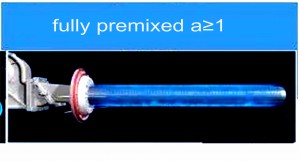- Afrikaans
- Albanian
- Amharic
- Arabic
- Armenian
- Azerbaijani
- Basque
- Belarusian
- Bengali
- Bosnian
- Bulgarian
- Catalan
- Cebuano
- China
- China (Taiwan)
- Corsican
- Croatian
- Czech
- Danish
- Dutch
- English
- Esperanto
- Estonian
- Finnish
- French
- Frisian
- Galician
- Georgian
- German
- Greek
- Gujarati
- Haitian Creole
- hausa
- hawaiian
- Hebrew
- Hindi
- Miao
- Hungarian
- Icelandic
- igbo
- Indonesian
- irish
- Italian
- Japanese
- Javanese
- Kannada
- kazakh
- Khmer
- Rwandese
- Korean
- Kurdish
- Kyrgyz
- Lao
- Latin
- Latvian
- Lithuanian
- Luxembourgish
- Macedonian
- Malgashi
- Malay
- Malayalam
- Maltese
- Maori
- Marathi
- Mongolian
- Myanmar
- Nepali
- Norwegian
- Norwegian
- Occitan
- Pashto
- Persian
- Polish
- Portuguese
- Punjabi
- Romanian
- Russian
- Samoan
- Scottish Gaelic
- Serbian
- Sesotho
- Shona
- Sindhi
- Sinhala
- Slovak
- Slovenian
- Somali
- Spanish
- Sundanese
- Swahili
- Swedish
- Tagalog
- Tajik
- Tamil
- Tatar
- Telugu
- Thai
- Turkish
- Turkmen
- Ukrainian
- Urdu
- Uighur
- Uzbek
- Vietnamese
- Welsh
- Bantu
- Yiddish
- Yoruba
- Zulu
Jul . 27, 2024 21:10 Back to list
Exploring the Art and Science of Iron Casting Techniques and Applications in Modern Manufacturing
The Importance of Iron Casting in Modern Manufacturing
Iron casting is a fundamental and time-honored manufacturing process that plays a crucial role in various industries. Dating back thousands of years, this technique has evolved significantly, yet it remains a vital method for producing a wide range of metal components. From intricate architectural details to essential automotive parts, the significance of iron casting cannot be overstated.
Understanding the Iron Casting Process
Iron casting involves pouring molten iron into a mold to create a specific shape when it solidifies. The process typically begins with the creation of a pattern, usually made of wood, metal, or plastic, which reflects the desired final product's geometry. Once the pattern is prepared, it is placed in sand or a similar material to form the mold. The mold halves are then assembled, molten iron is poured into the cavity, and once it cools and solidifies, the mold is broken away to reveal the cast iron object.
There are several types of iron, including gray iron, ductile iron, and white iron, each offering unique properties that make them suitable for different applications. For instance, gray iron is valued for its excellent castability and machinability, making it ideal for engine blocks and pipes. In contrast, ductile iron boasts enhanced tensile strength and versatility, often used in pipelines and automotive components.
Advantages of Iron Casting
One of the primary advantages of iron casting is its ability to produce complex shapes with ease. Unlike other manufacturing methods, iron casting can accommodate intricate designs without the need for extensive machining, reducing production time and costs. Additionally, the process can yield large quantities of parts with consistent quality, which is essential for industries requiring high-volume production.
Iron casting also demonstrates remarkable durability and wear resistance, making it an ideal choice for parts exposed to high stress or harsh environments. Components made from cast iron can withstand elevated temperatures and corrosion, extending their lifespan and reliability.
iron casting

The Eco-Friendly Edge
In recent years, there has been a growing emphasis on sustainable manufacturing practices, and the iron casting industry has made strides in this direction
. Many foundries are adopting environmentally friendly practices, such as recycling scrap metal and using efficient melting techniques to reduce energy consumption. By implementing these measures, the environmental footprint of iron casting is significantly diminished, aligning with global efforts to promote sustainability in manufacturing.Future Trends in Iron Casting
As technology continues to advance, the iron casting industry is also witnessing innovations that enhance its efficiency and capabilities. The integration of computer-aided design (CAD) and simulation software allows engineers to optimize molds and casting processes, further improving the precision and quality of cast parts. Additionally, advancements in 3D printing technology are paving the way for more complex and customized patterns, revolutionizing the traditional casting process.
Furthermore, the rise of electric vehicles and renewable energy technologies is creating new opportunities for the iron casting sector. Lightweight and high-strength components are in demand, and iron casting can adapt to meet these changing needs. This adaptability ensures that iron casting will remain relevant in the modern manufacturing landscape.
Conclusion
Iron casting is not just a historical manufacturing method; it is a dynamic process that continues to evolve in response to modern demands. Its ability to produce durable, intricate parts efficiently makes it an invaluable asset across various industries. As the world leans toward more sustainable and technologically advanced solutions, the iron casting industry stands poised to meet these challenges and embrace new opportunities for growth. With its deep-rooted history and promising future, iron casting will undoubtedly remain a cornerstone of manufacturing for years to come.
-
8mm Thin-Walled Cast Steel Manhole Cover Pallet Bottom Ring | Durable
NewsAug.04,2025
-
Premium Cast Iron Water Main Pipe: Durable, Corrosion-Resistant
NewsAug.03,2025
-
Durable Cast Iron Water Mains | AI-Optimized Systems
NewsAug.02,2025
-
High-Efficiency Propane Boiler for Baseboard Heat | Save Energy
NewsAug.01,2025
-
Premium Source Suppliers for Various Gray Iron Castings
NewsJul.31,2025
-
Durable Cast Iron Water Main Pipes | Long-Lasting
NewsJul.31,2025


